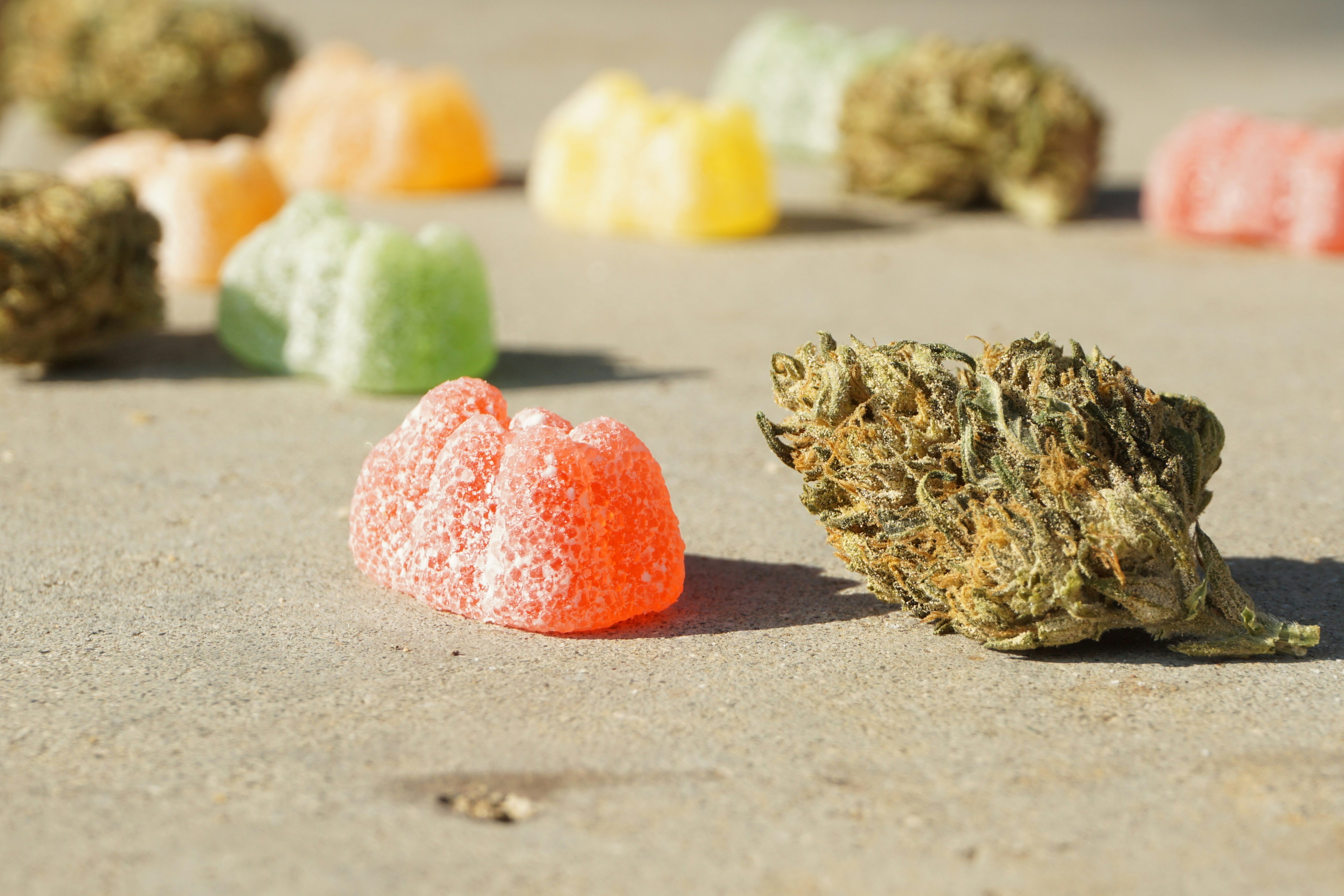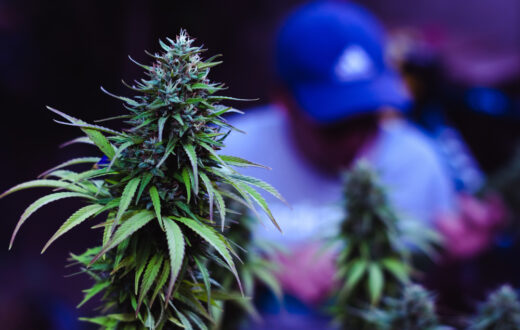Introduction to Cream Candy Autoflowering Strain
Cream Candy autoflowering strain has garnered significant attention among cannabis enthusiasts, owing to its delightful blend of flavors, high potency, and impressive yields. This strain is an intriguing hybrid that originates from a combination of carefully selected genetics, creating a unique plant tailored for both novice and experienced cultivators. Utilizing the genetics of both indica and sativa, Cream Candy produces a harmonious balance of physical relaxation and cerebral stimulation, appealing to a wide range of users.
One of the most appealing characteristics of the Cream Candy autoflowering strain is its flavor profile. Upon consumption, users experience a rich sweetness reminiscent of dessert candies, complemented by subtle hints of vanilla and undertones of earthiness. This dessert-like quality not only pleases the palate but also enhances the overall enjoyment, making it a popular choice for those seeking a flavorful cannabis experience.
In terms of potency, Cream Candy stands as a notable contender in the market, often showcasing THC levels that can range from 18% to 22%. This strength makes it suitable for a variety of recreational and medicinal uses. Its effects typically induce a gentle euphoria paired with relaxation, allowing users to unwind and forget daily stresses while maintaining mental clarity and focus. Such a combination can contribute to its appeal for medical users who may benefit from pain relief and mood enhancement.
Moreover, the Cream Candy autoflowering strain is highly regarded for its generous yields. When provided with optimal growing conditions, cultivators can expect a substantial harvest in a relatively short time frame. This rapid growth cycle is facilitated by its autoflowering nature, which allows the plant to transition from the vegetative phase to the flowering stage automatically, ensuring that growers can enjoy the fruits of their labor without extensive time investment. This set of traits establishes Cream Candy as a quintessential choice for those looking to grow both for personal use and commercial purposes.
Understanding Autoflowering Cannabis
Autoflowering cannabis strains represent a unique category within the broader cannabis cultivation landscape. Unlike photoperiod strains, which rely on specific light cycles to trigger the flowering stage, autoflowering varieties initiate this process automatically, based on age rather than light exposure. This fundamental difference simplifies the growing experience, making autoflowering strains particularly appealing to both novice and experienced growers.
Autoflowering cannabis typically transitions from the vegetative stage to the flowering stage approximately 2 to 4 weeks after germination. This rapid lifecycle allows growers to enjoy shorter cultivation periods and quicker harvests. For those seeking to understand how to grow the Cream Candy autoflowering strain, it is essential to recognize the importance of the strain’s automatic flowering behavior, as it enables more flexibility in managing grow schedules.
One of the critical benefits of autoflowering strains is their ability to thrive in various environmental conditions. Since they do not depend as heavily on light manipulation, they can be grown year-round indoors or outdoors. This versatility makes them an excellent choice for growers in diverse climates who may not have the ability to control light conditions meticulously. Additionally, autoflowering strains often exhibit compact growth patterns, which are ideal for limited space environments or stealth growing operations.
Moreover, autoflowering cannabis is known for its resilience. These plants can withstand a range of stressors better than their photoperiod counterparts, making them suitable for beginners who may not yet have perfected their growing techniques. In conclusion, understanding the fundamentals of autoflowering cannabis strains—as well as their unique growth characteristics—will not only enhance your cultivation skills but also ensure a smoother and more successful grow when attempting to cultivate strains like Cream Candy. This knowledge lays the foundation for maximizing the potential of such strains in any growing scenario.
Optimal Growing Conditions for Cream Candy
The Cream Candy autoflowering strain thrives best under specific environmental conditions that significantly influence its growth, health, and yield. Understanding these ideal growing conditions is essential for cultivators looking to maximize the potential of this delightful strain.
Temperature is a critical factor when growing Cream Candy. This strain flourishes in a temperate climate, ideally between 20°C to 28°C (68°F to 82°F) during the day. Nighttime temperatures should be slightly lower, around 15°C to 20°C (59°F to 68°F). Maintaining these temperature ranges not only supports optimal photosynthesis but also aids in preventing stress-related issues that can affect plant health.
Humidity plays an equally crucial role in the cultivation process. For the vegetative stage, a humidity level of 40% to 70% is recommended, transitioning to 30% to 50% during flowering. This careful adjustment helps to prevent mold and mildew while also ensuring that the plants can effectively transpire and absorb nutrients. Monitoring humidity levels is essential, especially in indoor setups where environmental control can be closely managed.
Light exposure is another vital aspect that cultivators must consider when learning how to grow the Cream Candy autoflowering strain. Since it is an autoflowering variety, it has a unique advantage, allowing for flexible light schedules. Ideally, plants should receive a minimum of 18 hours of light during the vegetative and flowering stages. High-quality, full-spectrum grow lights can significantly enhance growth and ensure robust bud development.
Soil type is equally important for cultivating Cream Candy. A well-aerated, nutrient-rich soil mix is ideal, with good drainage properties to prevent root rot. Incorporating organic amendments can promote healthy microbial life in the soil, further enhancing nutrient availability and promoting vigorous growth.
Nutrients and Feeding Schedule
Growing the Cream Candy autoflowering strain successfully requires a careful approach to its nutritional needs. Optimal plant growth is largely dependent on a balanced supply of essential nutrients, which can significantly influence the yield and quality of the crop. During the vegetative phase, this strain benefits from higher nitrogen levels, which encourages robust leaf and stem development. A nutrient formula with a balanced N-P-K ratio of approximately 3-1-1 is ideal at this stage. This will support vigorous growth as the plant establishes itself.
As the Cream Candy autoflowering strain transitions into the flowering phase, its nutrient requirements shift. At this point, it is crucial to lower nitrogen levels and enhance phosphorus and potassium to bolster flower development. A transition to a nutrient mix with an N-P-K ratio of about 1-3-3 will foster bud growth and improve overall flower quality. Additionally, consider incorporating calcium and magnesium into the feeding regime; these secondary nutrients play a vital role in metabolic processes and stress tolerance during critical growth periods.
Timing is another critical aspect of the feeding schedule. For optimal results, feed the plants every two weeks, applying nutrients at half-strength during the early stages to avoid potential nutrient burn. As the Cream Candy autoflowering strain progresses, gradually adjust the nutrient concentration based on plant responses. Additionally, ensure that the plants have access to sufficient water, as this will facilitate nutrient uptake. Regularly monitoring the pH of the soil or nutrient solution—maintaining it between 6.0 to 6.5—will further enhance nutrient absorption. In conclusion, a balanced approach to feeding and a tailored schedule according to the strain’s growth stages are essential for cultivating a healthy Cream Candy autoflowering strain.
Growing Techniques and Practices
To maximize the yield and quality of the Cream Candy autoflowering strain, employing effective growing techniques is essential. One popular method is topping, which involves cutting off the top of the main stem. This technique can encourage the growth of multiple colas, resulting in a bushier plant and a higher yield. When performed at the right growth stage, topping can help the Cream Candy strain develop a more even canopy, allowing all buds to receive ample light and contributing to overall better development.
Another beneficial practice is low-stress training (LST). This method focuses on gently bending and tying down the plant’s branches to encourage horizontal growth. By using LST, growers can keep the canopy at an even height, allowing for improved light penetration and airflow to all parts of the plant. For the Cream Candy strain, which is known for its robust growth, LST can be particularly effective in preventing overcrowding and ensuring that each bud site can flourish. The ultimate goal is to enhance light access without causing significant stress to the plants.
Utilizing trellises can also be a helpful technique for managing the Cream Candy autoflowering strain. Installing a trellis provides support for the branches, helping to manage heavy bud loads as the plants mature. This method not only aids in weight distribution but also promotes better airflow around the colas, reducing the risk of mold and mildew. For growers looking to optimize their yield, combining topping and LST with trellising creates an environment where the Cream Candy strain can thrive, resulting in healthy plants and abundant harvests.
Pest and Disease Management
Effective management of pests and diseases is crucial for successfully growing the Cream Candy autoflowering strain. This strain, like many others, can be susceptible to various pests, including aphids, spider mites, and whiteflies. Additionally, fungal infections such as powdery mildew and root rot can pose significant threats. Understanding how to identify these issues early can be the difference between a bountiful harvest and a disappointing yield.
To identify pest infestations, regular inspection of the leaves and stems is essential. Look for signs such as discolored leaves, webbing, or small insects present on the plants. For instance, aphids often cluster on new growth and can distort leaves, while spider mites create fine webs. Employing sticky traps can help monitor pest populations effectively. Once identified, pests may be controlled using natural insecticides like neem oil or insecticidal soap, which are generally safe for the Cream Candy autoflowering strain.
In terms of diseases, maintaining proper growing conditions is key. Ensure adequate air circulation and avoid overwatering to mitigate root rot and other fungal infections. Applying a fungicide at the first sign of powdery mildew can be beneficial. Furthermore, implementing crop rotation and removing any plant debris can help prevent the spread of diseases. Healthy soil, rich in nutrients and balanced pH levels, also plays a role in reducing susceptibility to diseases.
In summary, understanding how to grow the Cream Candy autoflowering strain includes being vigilant about pest and disease management. Regular monitoring, combined with proper preventive measures and treatments, ensures your plants thrive, ultimately leading to a successful and fruitful growing experience.
Harvesting Cream Candy Autoflowering Strain
Harvesting the Cream Candy autoflowering strain is a crucial step in ensuring the quality and potency of your yield. To determine the optimal time for harvesting, one should primarily focus on the maturity of the trichomes, which are the small, glandular structures that produce the plant’s cannabinoids and terpenes. Regularly examining the trichomes with a jeweler’s loupe or a microscope is advisable. When the majority of trichomes have turned from clear to a milky white color, it typically indicates that the plants are at peak potency. If a significant number of trichomes have turned amber, this signals a more sedative effect, while clear trichomes may suggest that the plant is not yet ready for harvest.
Besides checking trichome maturity, recognizing other signs of readiness is equally important. The leaves of the Cream Candy strain may start to yellow, and the pistils will turn from white to a reddish-brown hue. These indicators, combined with trichome observation, can confirm that it’s time to begin the harvest process.
Once the decision to harvest has been made, the best practices for cutting, trimming, and handling the plants should be followed to maximize both quality and yield. It is advisable to harvest in the morning when the plants are freshly hydrated. Use sharp, sterilized scissors or pruning shears for cutting the branches to minimize stress and the risk of disease. After cutting, hang the branches upside down in a cool, dark, and well-ventilated area to dry. Maintaining an optimal humidity level during the drying process is critical to prevent mold and preserve the quality of the Cream Candy autoflowering strain. Trim excess leaves carefully and monitor the drying conditions closely, ensuring that the buds cure well for an enhanced flavor and aroma.
Curing and Storing Cream Candy
Once the Cream Candy autoflowering strain has been harvested, the next important phase is the curing and storing process, which plays a crucial role in preserving its quality and enhancing the overall flavor profile. Proper curing allows the buds to develop a smoother smoke and to enhance their potency, making this step critical for any grower.
The curing process typically involves placing the harvested buds in glass jars, which should be filled about three-quarters full to allow for adequate air circulation. It is essential to monitor the humidity levels in the jars; an ideal humidity range is between 55% and 65%. This range can be achieved by using humidity packs or hygrometers to gauge moisture levels. The jars should be opened at least once a day during the curing process to allow fresh air in and to let excess moisture escape. This practice is known as “burping” and should be maintained for at least two weeks, although extending this period can further improve the end product.
During the curing phase, it is essential to keep the jars in a cool, dark place to prevent degradation from light and heat. Temperatures should remain stable, preferably between 60°F to 70°F (15°C to 21°C). The high-quality nature of the Cream Candy autoflowering strain can further be preserved by ensuring the buds are fully dried before curing; ideally, this is done when stems snap rather than bend. Additionally, storing the final product in vacuum-sealed bags or airtight containers can further enhance longevity and freshness.
By taking these necessary steps in curing and storing Cream Candy, growers can significantly enhance their harvest’s flavor, aroma, and overall quality, allowing them to enjoy this remarkable strain to the fullest.
Conclusion: Enjoying Your Cream Candy Harvest
Successfully growing the Cream Candy autoflowering strain requires attention to detail, knowledge of optimal growing conditions, and ongoing experimentation. Throughout this journey, you have learned about the importance of choosing the right medium, providing adequate lighting, and maintaining proper humidity and temperature levels. Each step contributes significantly to ensuring a bountiful yield of this delightful strain, known for its sweet flavor and relaxing effects.
The initial stages of growth demand particular care, as seedlings are particularly vulnerable. A well-equipped grow space that offers sufficient light, ventilation, and temperature control is crucial. As you transition your plants into the flowering phase, you will notice their rapid development and increased bud formation. It’s essential to monitor these changes closely, adjusting nutrient inputs and environmental factors as necessary to optimize growth.
Moreover, harvesting at the right time is an essential part of the overall cultivation process. A close inspection of trichomes will guide you in determining the perfect moment to harvest your Cream Candy autoflowering strain. Waiting for the right level of maturity not only enhances flavor but also maximizes potency. After harvesting, the proper curing process will elevate the experience, allowing the flavors to develop further and ensuring a smoother smoke.
As you reflect on your growing journey, consider sharing your experiences with other growers in the community. Discussing techniques, successes, and challenges can foster a supportive network among cannabis enthusiasts, encouraging continual improvement in growing skills. By collaborating and sharing insights, you can contribute to the collective knowledge base, making the endeavor of growing Cream Candy autoflowering strain even more rewarding. Happy growing!












